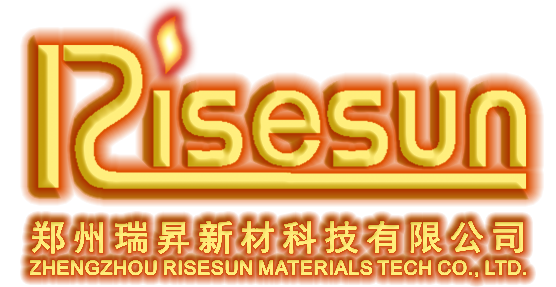27
2024
-
12
Exploring the Advantages of Silicon Carbide Heating Element Resistance
Exploring the Advantages of Silicon Carbide Heating Element Resistance Table of Contents 1. Introduction to Silicon Carbide Heating Elements 2. What is Silicon Carbide? 3. Key Benefits of Silicon Carbide Heating Elements 4. Applications of Silicon Carbide Heating Elements 5. Comparison with Traditional Heating Elements 6. Environmental Impact of Silicon Carbide Heating Ele
Exploring the Advantages of Silicon Carbide Heating Element Resistance
Table of Contents
- 1. Introduction to Silicon Carbide Heating Elements
- 2. What is Silicon Carbide?
- 3. Key Benefits of Silicon Carbide Heating Elements
- 4. Applications of Silicon Carbide Heating Elements
- 5. Comparison with Traditional Heating Elements
- 6. Environmental Impact of Silicon Carbide Heating Elements
- 7. The Future of Silicon Carbide in Heating Technology
- 8. Frequently Asked Questions (FAQs)
- 9. Conclusion
1. Introduction to Silicon Carbide Heating Elements
Silicon Carbide (SiC) heating elements are becoming increasingly popular in various industrial applications due to their unique properties. Unlike traditional heating elements, Silicon Carbide offers significant advantages, making them a preferred choice for many manufacturers. In this article, we will explore the remarkable benefits and applications of Silicon Carbide heating elements, comparing them with conventional materials and discussing their environmental impact.
2. What is Silicon Carbide?
Silicon Carbide is a compound made of silicon and carbon, known for its exceptional hardness and thermal conductivity. It is a semiconductor that exhibits unique electrical, thermal, and mechanical properties, making it suitable for a wide range of applications, including heating. Silicon Carbide can withstand high temperatures, making it ideal for environments where durability and efficiency are crucial.
3. Key Benefits of Silicon Carbide Heating Elements
3.1. High Thermal Efficiency
Silicon Carbide heating elements boast superior thermal efficiency compared to traditional materials. They can reach high temperatures quickly, reducing energy consumption and operational costs. This efficiency is essential for industries that rely on precise temperature control, such as semiconductor manufacturing and ceramics.
3.2. Exceptional Durability
One of the standout features of Silicon Carbide heating elements is their durability. They can endure harsh environments and extreme temperatures, making them less prone to breakage or wear. This longevity translates to lower maintenance costs and longer replacement intervals, boosting overall productivity.
3.3. Resistance to Oxidation
Silicon Carbide exhibits excellent resistance to oxidation, a common issue with traditional heating elements. This property allows SiC heating elements to maintain their performance over time without degrading, making them ideal for high-temperature applications.
3.4. Fast Heat-Up and Cool-Down Times
Silicon Carbide heating elements enable faster heat-up and cool-down times, enhancing process efficiency. This rapid response time is particularly beneficial in industries where time is critical, such as food processing and glass manufacturing.
3.5. Versatile Operating Temperature Range
These heating elements can operate at a wide range of temperatures, from low to extremely high, making them suitable for diverse applications. Whether you need a heating element for a simple heating task or a high-temperature application, Silicon Carbide can deliver.
4. Applications of Silicon Carbide Heating Elements
Silicon Carbide heating elements find applications across various industries due to their versatility and efficiency. Some notable applications include:
4.1. Semiconductor Manufacturing
In the semiconductor industry, achieving precise temperature control is critical. Silicon Carbide heating elements provide the accuracy and stability required for processes such as wafer fabrication and ion implantation.
4.2. Ceramic and Glass Industries
The ceramic and glass industries benefit from the high temperatures and rapid heat-up times of Silicon Carbide heating elements. These elements are used in kilns and furnaces, ensuring consistent heating and improved product quality.
4.3. Aerospace and Defense
Silicon Carbide’s high thermal resistance and durability make it suitable for aerospace and defense applications, where components often endure extreme conditions.
4.4. Chemical Processing
In chemical processing, Silicon Carbide heating elements are used for reactions requiring high temperatures. Their resistance to corrosion and oxidation enhances their performance in aggressive environments.
4.5. Food Processing
Silicon Carbide heating elements are also used in food processing equipment, where fast and efficient heating is essential. Their ability to maintain consistent temperatures ensures product safety and quality.
5. Comparison with Traditional Heating Elements
When comparing Silicon Carbide heating elements with traditional materials such as Kanthal or Nichrome, several advantages become evident.
5.1. Temperature Range
Silicon Carbide heating elements can operate at much higher temperatures than traditional elements. While conventional materials may degrade at elevated temperatures, SiC remains stable and efficient.
5.2. Energy Efficiency
Silicon Carbide's high thermal efficiency means less energy is wasted during operation, leading to significant cost savings over time. In contrast, traditional materials often require more energy to achieve the same heat levels.
5.3. Longevity and Maintenance
Traditional heating elements often require frequent replacements due to wear and tear. In contrast, Silicon Carbide elements have a longer lifespan, reducing maintenance and replacement costs.
6. Environmental Impact of Silicon Carbide Heating Elements
As industries increasingly focus on sustainability, the environmental impact of materials is a crucial consideration. Silicon Carbide heating elements are considered more environmentally friendly than traditional options due to their longevity and energy efficiency.
6.1. Reduced Energy Consumption
With their high thermal efficiency, Silicon Carbide heating elements consume less energy, leading to a reduced carbon footprint.
6.2. Lower Waste Generation
The durability of Silicon Carbide elements means fewer materials are discarded, contributing to less waste in landfills compared to traditional heating elements that must be replaced frequently.
7. The Future of Silicon Carbide in Heating Technology
As technology continues to advance, the role of Silicon Carbide heating elements is expected to grow. Research and development are paving the way for improved materials and applications, making SiC a focal point in high-temperature and energy-efficient heating solutions. Future innovations may include enhanced designs that further optimize efficiency and performance, solidifying Silicon Carbide's position in various industries.
8. Frequently Asked Questions (FAQs)
8.1. What are Silicon Carbide heating elements?
Silicon Carbide heating elements are high-performance heating components made from Silicon Carbide, known for their durability, thermal efficiency, and resistance to oxidation.
8.2. What industries benefit from Silicon Carbide heating elements?
Industries such as semiconductor manufacturing, ceramics, glass production, aerospace, chemical processing, and food processing benefit from Silicon Carbide heating elements due to their wide operating temperature range and efficiency.
8.3. How do Silicon Carbide heating elements compare to traditional materials?
Silicon Carbide heating elements outperform traditional materials in terms of temperature range, energy efficiency, durability, and maintenance, making them a superior choice for many applications.
8.4. Are Silicon Carbide heating elements environmentally friendly?
Yes, Silicon Carbide heating elements are considered environmentally friendly due to their reduced energy consumption and lower waste generation compared to traditional heating materials.
8.5. What is the future outlook for Silicon Carbide heating technology?
The future of Silicon Carbide in heating technology looks promising, with ongoing research and development focused on enhancing materials and applications, further solidifying its role in high-temperature and energy-efficient solutions.
9. Conclusion
Silicon Carbide heating elements represent a significant advancement in heating technology, offering numerous advantages over traditional materials. Their high thermal efficiency, exceptional durability, and versatility make them suitable for a wide range of applications across various industries. As the demand for energy-efficient solutions continues to rise, Silicon Carbide heating elements are poised to play a pivotal role in the future of heating technology. Embracing Silicon Carbide not only enhances operational efficiency but also contributes to a more sustainable industrial landscape.



